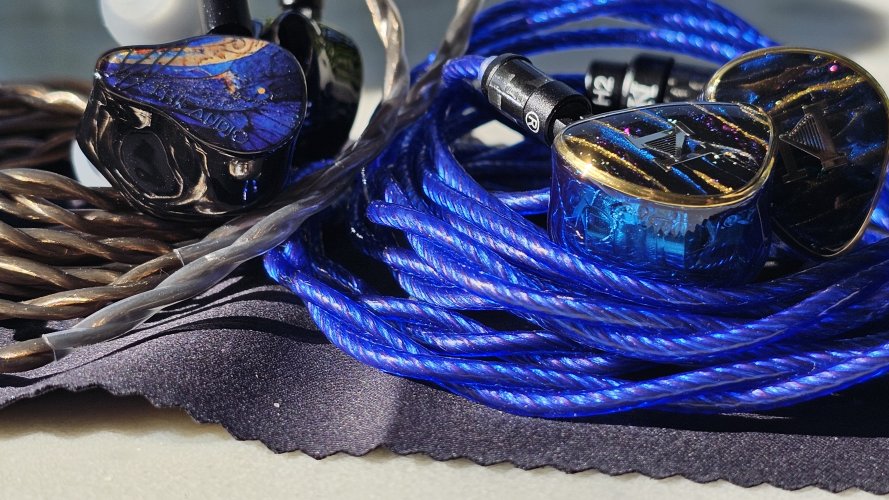.
Day 5 with the DN-1000
Bass seems to have tightened up. Since it’s hard to distinguish the changes with burn-in when listening to the earphones alone, I often compare them as time progresses with other references. It is then that I realize just how resolving these earphones can be.
Today I got a chance to listen to the Klipsch X11, the successor to my past love, the X10: They didn’t leave a good impression. The treble lacked air, the mids had sub-par resolution, and the bass was warm. It’s your fault, DN-1000.
If a blind test were conducted between the X11 and DN-1000, and the price were around the same for both, 8 or 9 participants out of 10 would likely choose the Dunu.
The DN-1000 just makes other earphones sound too warm.
Yesterday’s demo of Sony’s XBA-H3 left a lasting impression [Translator’s note: where he referred to the H3 as a “bass machine”], but the DN-1000s equipped with the SuperDarts tips seem to dig just as deep.
Today I also listened to the K3003 and again noticed how similar the mids are to the Dunus. It’s as if the DN-1000s are trying to imitate the AKGs in this region. But the larger dynamic drivers contribute to other sound differences, including that deep bass.
Also worthy of note is how the quality of the source material affects the sound. Sony earphones aren’t too picky, but that’s not the case with the DN-1000. This is especially the case with female vocals, where certain recordings can bring out the BA-ness. [Translator’s note: I think he’s referring to the brittleness in the lower treble that comes out in some (badly tuned) BAs, but I’m not entirely sure. I just translated what he said almost literally (which is more along the lines of ‘BA stench’).]

As you can see in the frequency response graph I uploaded, I’m thinking that what I’m hearing correlates to that peak at around 7kHz. The graph also shows how the response changes with the different tuning rings. The 3 types of rings have different thicknesses; the thicker the ring the further the ear tip sits from the housing, allowing for deeper insertion. The deepest insertion brings out the most bass and a peak at 20kHz. The SuperDarts tips have a long tube, so the affect on sound is similar to what the red tuning ring provides.
The white tips, as explained above, are very soft, providing a delicate fit in the ear. They’re useful when you want to thin out the bass region a bit.
The only negative point is that the deepest bass is just a touch too slow. It goes deep, but there are times I’d like more impact at the beginning of each note.
But the cost-to-performance ratio is excellent! These are brilliant with male vocals and orchestral music, but female vocals are recording-dependent.
That’s all for today folks.
























